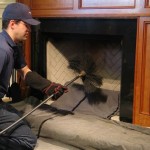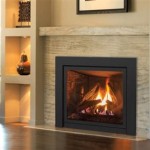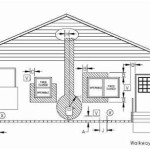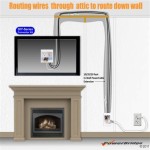Mantel Stone Fireplace: A Comprehensive Guide to Design, Materials, and Installation
A mantel stone fireplace is a significant architectural feature that combines functionality and aesthetic appeal. It serves as a focal point within a room, providing warmth and visual interest. Understanding the various aspects of design, material selection, and installation is crucial for creating a successful and enduring fireplace feature.
The term "mantel" refers to the shelf or projecting structure above the fireplace opening. It traditionally serves as a decorative element and a place to display artwork, photographs, or other personal items. "Stone," in this context, designates the primary material used for the fireplace surround, the structural elements that frame the firebox. The combination of these elements results in a robust and visually striking fireplace that can enhance the character of any residential or commercial space.
Understanding the Design Considerations for a Mantel Stone Fireplace
The design of a mantel stone fireplace is a multifaceted process that requires careful consideration of the room’s existing architecture, the desired aesthetic style, and functional requirements. The scale of the fireplace should be proportionate to the room's size, avoiding overwhelming small spaces or appearing insignificant in larger ones. Ceiling height, wall dimensions, and existing architectural details should all be taken into account.
A primary design consideration is the style of the fireplace. Traditional designs often incorporate ornate carvings, intricate moldings, and classical architectural elements. These fireplaces tend to be larger and more imposing, reflecting the grandeur of historical periods. Conversely, modern designs favor clean lines, minimalist forms, and a more understated aesthetic. These fireplaces typically utilize simpler shapes, less ornamentation, and often incorporate contrasting materials like glass or metal.
Beyond style, the practical aspects of fireplace design must be addressed. The placement of the fireplace within the room is crucial for maximizing its functionality. It should be positioned to provide optimal heat distribution and visual impact. The size and shape of the firebox must also be carefully considered, taking into account the type of fuel to be used – wood, gas, or electric – and the desired heat output. Proper ventilation is paramount for safe and efficient operation, requiring adherence to local building codes and regulations.
The mantel itself presents further design opportunities. Its height and depth should be carefully calculated to ensure both aesthetic balance and practical functionality. A mantel that is too high may appear awkward or inaccessible, while one that is too low may impede the view of the fire. The depth of the mantel should be sufficient to accommodate the display of decorative items without obstructing the airflow around the fireplace opening.
The overall design should also consider the integration of the fireplace with the surrounding wall. Options include a full-height stone surround that extends to the ceiling, a partial surround that terminates at a specific height, or a freestanding fireplace that serves as a sculptural element within the room. The choice of surround design will depend on the desired aesthetic and the architectural context of the space.
Selecting the Appropriate Stone for a Mantel Fireplace
The selection of stone for a mantel fireplace is a critical decision that impacts both its aesthetic appeal and its long-term durability. A wide variety of natural and manufactured stones are available, each with its unique characteristics, advantages, and disadvantages. The choice of stone should be based on considerations such as color, texture, durability, cost, and maintenance requirements.
Natural stones offer a unique and timeless aesthetic, characterized by variations in color, veining, and texture that cannot be replicated by manufactured alternatives. Common natural stone options include limestone, marble, granite, slate, and fieldstone. Limestone is a sedimentary rock known for its soft, warm tones and natural variations. It is relatively easy to work with and offers a classic, elegant appearance. Marble is a metamorphic rock renowned for its luxurious appearance and distinctive veining. It is available in a wide range of colors and patterns but is more susceptible to staining and scratching than some other stone options. Granite is an igneous rock prized for its exceptional durability and resistance to heat, scratches, and stains. It is available in a wide range of colors and patterns and is well-suited for high-traffic areas. Slate is a metamorphic rock characterized by its layered structure and dark, earthy tones. It is a durable and water-resistant material that is often used for fireplace surrounds and hearths. Fieldstone is a naturally occurring stone that is typically found in riverbeds and fields. It offers a rustic and natural appearance and is often used for creating fireplaces with a more informal or organic aesthetic.
Manufactured stones, also known as cultured stones, are a cost-effective alternative to natural stone. They are typically made from a mixture of cement, aggregates, and pigments, and are designed to replicate the appearance of natural stone. Manufactured stones offer several advantages, including lower cost, lighter weight, and greater consistency in color and texture. They are also easier to install than natural stones, requiring less specialized tools and expertise. However, manufactured stones lack the unique variations and character of natural stone and may not be as durable over the long term.
When selecting stone for a mantel fireplace, it is essential to consider the overall aesthetic of the room. The color and texture of the stone should complement the existing décor and architectural style. Light-colored stones can brighten up a room and create a more spacious feel, while dark-colored stones can add drama and warmth. The texture of the stone can also impact the overall look of the fireplace. Smooth, polished stones offer a more refined and elegant appearance, while rough, textured stones create a more rustic and natural feel. It is also important to consider the maintenance requirements of the chosen stone. Some stones, such as marble, require regular sealing to protect them from staining and scratching. Others, such as granite, are more resistant to damage and require less maintenance.
The size and shape of the individual stone pieces should also be considered. Larger stones can create a more imposing and dramatic effect, while smaller stones can add detail and texture. The shape of the stones can also influence the overall aesthetic. Rectangular stones offer a more formal and structured look, while irregularly shaped stones create a more natural and organic feel. The choice of stone size and shape should be based on the desired aesthetic and the overall design of the fireplace.
Essential Steps in the Installation of a Mantel Stone Fireplace
The installation of a mantel stone fireplace is a complex process that requires careful planning, meticulous execution, and adherence to local building codes and regulations. It is highly recommended that the installation be performed by a qualified and experienced professional to ensure safety and proper functionality. Improper installation can lead to structural problems, fire hazards, and costly repairs.
The first step in the installation process is to prepare the site. This involves ensuring that the floor is level and structurally sound, and that the wall behind the fireplace is properly reinforced to support the weight of the stone. Any existing fireplace or chimney should be inspected for damage and repaired or replaced as needed. The location of electrical outlets and gas lines should be identified and properly routed to avoid interference with the installation.
Next, the firebox must be installed. The firebox is the chamber where the fire burns, and it must be constructed of fire-resistant materials such as firebrick or cast iron. The firebox should be properly sized to accommodate the type of fuel to be used and the desired heat output. It should also be properly insulated to prevent heat loss and protect the surrounding structure from damage. The installation of the firebox must comply with all local building codes and regulations.
Once the firebox is installed, the stone surround can be constructed. This involves carefully cutting and fitting the stone pieces to create the desired design. A strong adhesive mortar is used to bond the stones together and to the wall. The stones should be laid in a pattern that is both aesthetically pleasing and structurally sound. It is important to ensure that the stones are properly aligned and that the joints between the stones are evenly spaced. The installation of the stone surround requires patience, precision, and attention to detail.
After the stone surround is complete, the mantel can be installed. The mantel is typically attached to the wall using screws or bolts. The mantel should be level and securely fastened to prevent it from falling. The height and depth of the mantel should be carefully adjusted to ensure both aesthetic balance and practical functionality. The mantel should be treated with a sealant to protect it from moisture and staining.
Finally, the fireplace must be connected to the chimney or venting system. The connection must be airtight to prevent smoke and gases from escaping into the room. The chimney should be properly inspected and cleaned to ensure that it is free of obstructions. The venting system must comply with all local building codes and regulations. It is highly recommended that a professional chimney sweep be hired to inspect and clean the chimney on a regular basis.
Following these steps carefully ensures a safe and beautiful mantel stone fireplace that enhances the home for many years to come. Proper research and professional execution are key to a successful fireplace installation.

Barnwood Fireplace Mantel The Collection

Magrahearth Natural Wood Concrete Mantel Fireplace Stone Patio

Magrahearth Natural Wood Concrete Mantel Fireplace Stone Patio

Areheart Stone Fireplace Mantel

Chiseled Stone Series 5 Mantel Grey Capo Fireside

Conrad Cast Stone Fireplace Mantel Old World Stoneworks

Newport Cast Stone Fireplace Surround Oregon Castings And Design

Fireplaces Eldorado Stone

Contemporary Cast Stone Fireplace Mantel

Country Style Mantels And Fireplaces Town Living
Related Posts








